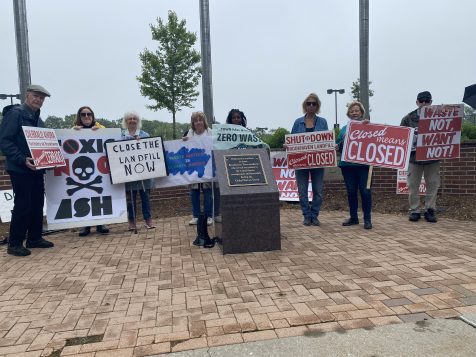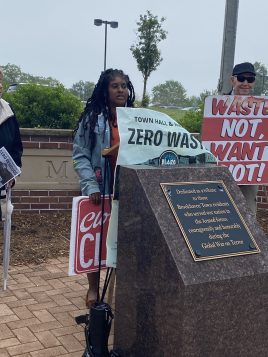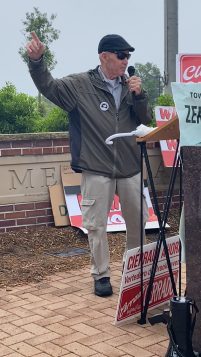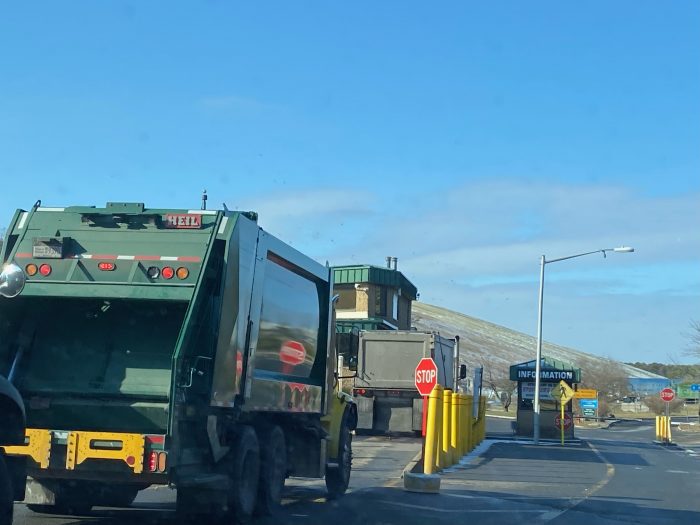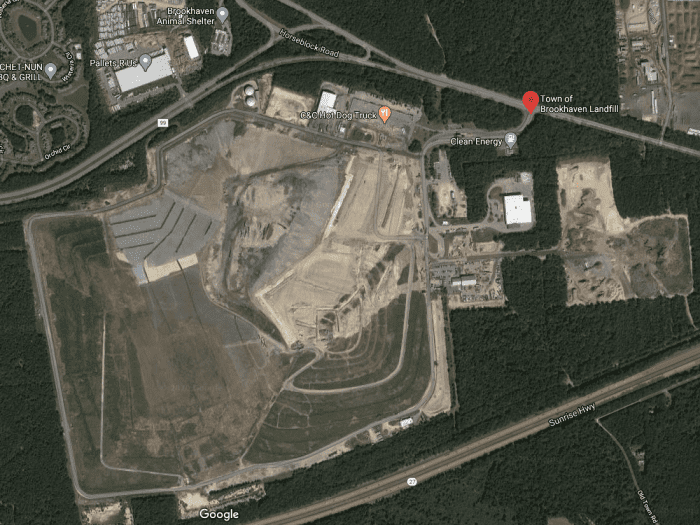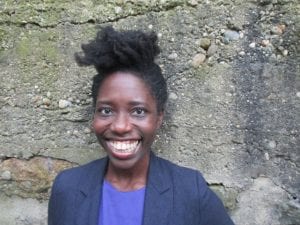By William Stieglitz
On Monday, June 9, the Brookhaven Landfill Action and Remediation Group (BLARG) rallied outside the Brookhaven Town Hall in Farmingville to call for the closure of the Brookhaven landfill and the development of “zero -waste” solutions. Pollution from the landfill, activists argued, has endangered the health and safety of those in North Bellport, where the landfill is located, and that its closure would provide both environmental and economic benefits.
“This landfill has been with our community for fifty plus years,” said BLARG co-founder Monique Fitzgerald. She introduced herself as a proud descendant of the Setalcott Nation, which originally occupied Brookhaven’s land, and described the landfill in the minority community as “a monument to environmental racism.” The closure of the landfill, she said, had been repeatedly promised since the 1980s, but each time the landfill had been expanded instead. “It is 270 feet tall. It’s one of the tallest structures in Suffolk County.” According to Fitzgerald, Brookhaven Town Councilman Michael Loguercio (R, Ridge) had previously said the landfill would close in 2024.
Loguercio said, “The landfill is forecasted to close sometime in 2028, consistent with our plan” and argued activists were spreading the false impression it could be closed sooner. He also said that as a Gold Star Family member, he objected to the setting of the rally, a memorial for fallen soldiers outside the town hall, being used for what he considered a “fanciful charade.”
William Kokell, however, who spoke at the rally as a veteran and as a member of the South Country Peace Group, said the landfill had become too large, and swift action needed to be taken to protect children’s lives. “I’ve been all over the Pacific Ocean, all over a lot of Southeast Asia. I have never ever, ever seen anything even close to that.” He said his son went to school with three young men from North Bellport who developed cancer, attributing the disease to air and water pollution in the area.
John McNamara, who spoke as a coordinator from Christians Against Racism in the Apostolic Spirit (CARITAS), said solutions could be reached through a four-step plan toward zero waste.
Step 1, he said, is to adopt a Save Money and Reduce Trash, or SMART, program, where instead of a set fee, “you just pay money for the amount of trash that you dispose of.” Step 2 is to implement both the “Bigger, Better Bottle Bill” and the “Manufacturer’s Responsibility Bill” in the state senate and assembly. The first, he explained, would allow more kinds of bottles to be covered for recycling, while the second would incentivize manufacturers to rely more on recyclable materials and limit the use of toxic chemicals. Step 3 would be a townwide composting program for Brookhaven, and Step 4 would be establishing “reuse and repair” centers for people to bring no longer wanted items where others could come to pick them up.
In terms of economic benefits, McNamara argued zero-waste policies would save taxpayer money he says is currently used to ship a portion of Brookhaven’s waste off the island to landfills in Ohio, Pennsylvania, New Jersey and upstate New York. Fitzgerald also argued that the landfill, by bringing in industries like warehouses and truck terminals, and that this comes at the expense of funding needed to keep teachers employed at South Country district schools.
Loguercio, responding to the topic, said, “We would love to reach a point of zero waste, so would everyone else in America, but it doesn’t work because the strength of the markets for recycling just don’t exist.” Fitzgerald, however, reading a statement from Zero Waste USA, argued that “communities across the US” using zero-waste policies have “cut their waste stream in half within a few short years: achieving 60%, 70% and 80% reductions.”
“We are looking for a partnership for zero waste,” said Fitzgerald. “We are looking to create, procreate, co-design, and get our hands dirty right along with the council and the town supervisor Dan Panico [R], so this is on all of us to do.”

